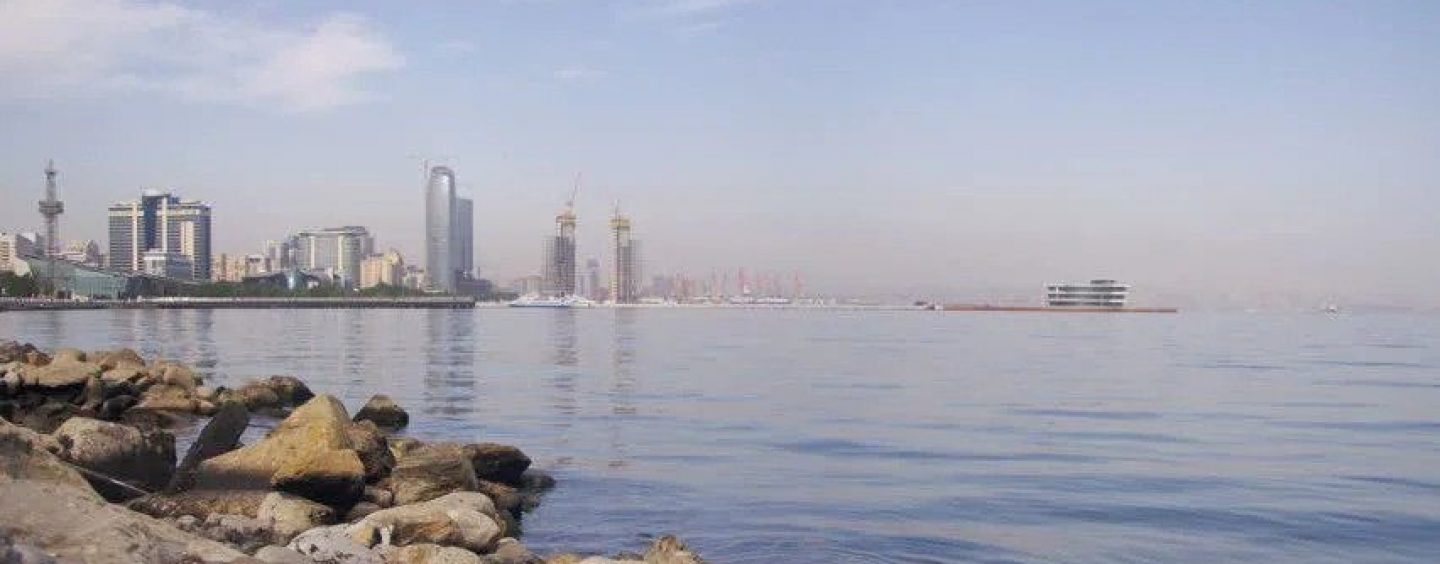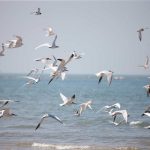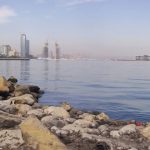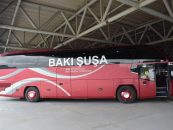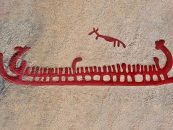By Jill Sperandio
The flora and fauna of Azerbaijan is varied and rich. The inventories of scientific organizations spell this out in dry, unromantic prose and numbers. They tell us of 9 climate zones with their related habitats, 256 species of birds and 120 migrants along the flyways on east and west shores of the Caspian, 12,000 animal and 4000 plant species which are found in Azerbaijan. They also tell us that Azerbaijan is home to many species now endangered elsewhere, and the responsibility we have to monitor and protect. But reading these reports makes little lasting impression – to appreciate their message you must go out and look.
I am a novice birdwatcher. I have fed birds in my back garden since I was a child, know the names of most common varieties, and have spent happy hours watching them in many countries around the world. I am not, however, an expert with the passion for watching and recording shared by some Azeris and a few of the expatriates who flow in and out of Baku over the years – people affectionately known as “tweeters” in other parts of the world. So when I was given the opportunity to spend a day out with two from this hallowed group I jumped at the chance, took my place in the back seat of the car, readied my binoculars and surreptitiously opened the bird book on my lap.
We drove north along the coast road past the man-made birds – the aging MIG’s lined up on the military runways near Sumgait – and beyond onto the coastal plain. The morning sun sparked on a blue and green wave-flecked Caspian to our right, and picked out the swirling pink and white rock bands on the hills to our left. Ahead the unmistakable silhouette of Five Finger Mountain loomed against the horizon. This was a road I’ve driven many times on my way to the green orchards and forests of Guba and beyond, and usually at a speed that precluded noticing anything other than the vegetable-ladened Ladas traveling in the opposite direction. But today we slowed, and turned off onto an unmarked, rutted road – and suddenly we were in a different world.
Not one that at first glance looked too promising. For the first few miles the road crossed large, flat, arid fields, divided up by drainage and irrigation channels in varying states of repair, and dotted with ruined farm buildings. These were the remnants of the Soviet collect farm system which had bought this marginal farmland into production, a production unsustainable once markets, machinery and labor disappeared. But as we stopped at a crossroads to look at Falcons lined up on the telegraph lines, a graceful hawk rose from the fields and circled around – a Montagu’s Harrier. Across the road, in a cluster of low bushes growing where a broken irrigation piped leaked water, a lovely birdsong lured me to investigate. A truck pulled to a stop as I was about to step off the road into the lush, knee-high grass, the driver calling to me in Azeri. When he saw my blank expression a hand gesture indicated snakes. A stretching of the arms and it was clear we were talking about big snakes. I stepped back hurriedly onto the road, the driver pulled off with a wave, and a small brown bird flitted into a branch in full view – the singer of the beautiful song – a Nightingale.
On down the road, and the birds bring color to the green and brown landscape. The brilliant blue of a Roller, and the green and yellow of Bee Eaters perched on the wires, flashes of a yellow Oriele amid the bushes on the side of the road, the black and white of Wheatears perched on low bushes and fence posts on the lookout for insects. The landscape changed – the road was weaving through reed beds surrounding large pools of water below us on either side, the white plumes swaying gracefully above our heads in the wind, the occasional row boat moored near the bank, When we stopped, the only the sound of the wind in the reeds disturbed the peace, and in the quiet a handful of birds were identified by their calls long before we saw them fly – Reed and Grasshopper Warblers, a jewel-colored Kingfisher, a Marsh Harrier gliding low over the pools, a startled Heron talking off at our approach, and Coots and Tufted Ducks bobbing on the water, Spanish Sparrows flitting from bush to bush.
Further still, and we stop by a copse of conifers – the remnants of some long forgotten forestry scheme that had somehow survived local villagers foraging for fuel. Here we search for evidence of migrating owls and find it lying under the trees – the balls of feathers, hair and bones that owls disgorge after feeding on their prey. And further proof – the skeleton and wing feathers of a barn owl – perhaps a victim of migration exhaustion, or of the catapult or gun or a local hunter.
The landscape changes once again as we round the perimeter of an abandoned factory and come to the derelict gate and faded regulations of an old Soviet hunting area. We drive through rolling sand dunes, startling a hare and a fox out hunting it, and then are soon along the shore with the sea to one side of us and lagoons alive with birds on the other. Here are the waders, Redshanks and Greenshanks, Spoonbills and Avocets, Sandpipers and Kentish Plovers, running along the water’s edge grabbing morsels of food washed up by the waves. Flamingoes lower their heads to shovel in the shallows, black Cormorants perch on logs that rear out of the water, Swans stretch their necks to check out our arrival, while flotillas of gulls and ducks paddle lazily by or vie for position on sand-banks.
We drive back to the main road, a spectacular pink and gold sunset unfolding over the foothills of the Caucasus before us and a list of over seventy different birds we have seen in the course of the day. We have to pause briefly to move a tortoise marching doggedly and unerringly down the center of the road in front the car. Only a little over an hour and we are back in the center of Baku after a day spent in places full of solitude and natural beauty free of litter and industrial debris. It’s been a day when those dry reports about “natural environments” and “endemic species” have taken on meaning and memories.
It has also been a day that has brought home to us the importance of protecting these environments. Our drive along the coast took us past the rotting corpses of two Pelicans, and clumps of feathers that marked decomposing Swans. Scattered cartridge cases indicated that these were not the victims of natural causes. The growing number of shops in Baku selling hunting equipment, the apparent lack of supervision of hunting areas, and the proliferation of four-wheel drive vehicles that allow people to drive across areas of delicate plant life, or the nesting grounds of birds without realizing the damage they are doing, are all matters for concern.
Looking through internet websites about bird watching, it is obvious that many eastern-European countries are now aware of the potential for “green tourism” connected with bird watching, offering protected areas and specialist tours. Azerbaijan should move fast to follow suit. At the government level this means making decisions about protected areas and limitations on hunting. However, government action alone will not be sufficient to protect Azerbaijan’s bird and wild life. Groups of individuals with an interest in the environment must take the initiative in educating the population and the world at large, and record and monitor developments within the country. One such group worthy of support is the Azerbaijan Ornithological Society. That they can make a difference has been amply demonstrated in most countries in Western Europe where volunteer groups and NGO’s have focused public attention on protecting natural beauty – which Azerbaijan has in abundance.

